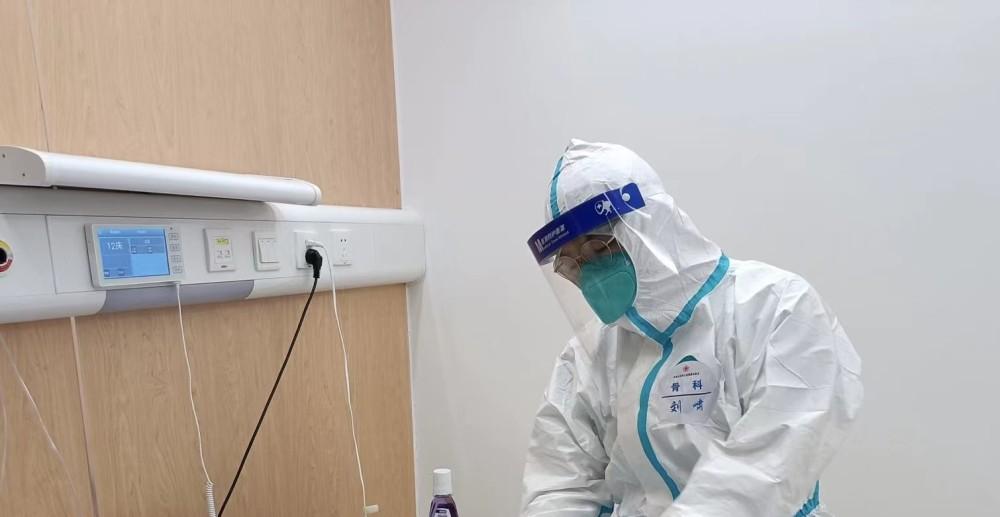Chongli, Hebei, 12 Feb (Xinhua) -- On the third day of the opening of the Beijing Winter Olympics, Liu Xiao underwent an operation.

Liu Xiao is making rounds to understand the patient's situation. Courtesy of respondents
The day before the opening, a foreign skier fell on his back during training. After receiving the referral notice, Liu Xiao, an orthopedic surgeon in the Winter Olympic Medical Security Team of Peking University Third Hospital, quickly put on a protective suit and rushed to the emergency department, and the patient was quickly sent to the Chongli Branch of the Third Hospital of Peking University.
The first step of the consultation and examination encountered a small trouble. The athletes did not speak English, and the doctors had to communicate through the accompanying staff interpreters, and after asking about the symptoms and clinical manifestations one by one, the initial judgment was that it was a fracture of the spine.
After X-ray, CT and MRI assisted diagnosis, doctors have further accurate judgment. "This is a spinal fracture that involves both anteroposterior and posterior structures, and is clinically an unstable type of fracture." Liu Xiao said that such unstable fractures are at risk of further displacement or even secondary spinal cord injury.
After comprehensive consideration, the doctors proposed two sets of treatment options: one is conservative treatment with fixed and bed rest, and the other is surgery. In order to allow patients and their team to intuitively understand the injury, they carried out CT three-dimensional reconstruction of the patient's injury part, so that ordinary people can also understand the fracture site at a glance, and explain in detail the advantages and disadvantages and prognosis of the two options.
After discussion, the athletes and the team decided to opt for surgery. "They have a lot of trust and affirmation in our treatment plan and explanations, so they are very determined to ask for treatment here." Liu Xiao said.
A closed-loop and intraoperative expert discussion for surgery was held quickly, resulting in a detailed treatment plan including preoperative preparation, intraoperative details and postoperative rehabilitation.
Closed-loop and internal experts in conjunction with preoperative discussions. Courtesy of the hospital
Since this is an internal fixation procedure that requires screws built into the patient's vertebral body, internal fixation needs to be removed after the fracture has healed. Considering that the patient would have to return to China for internal fixation surgery later, the hospital's medical equipment support team immediately deployed a set of internationally accepted surgical instruments and spinal internal fixation materials.
On the 6th, Liu Xiao and three other doctors completed the internal fixation surgery for thoracic vertebral fractures. The operation of more than 1 hour is not difficult for experienced doctors. But this special patient's identity of the operation still made Liu Xiao feel a certain pressure. Fortunately, the process went smoothly and everything was planned.
Liu Xiao, who was sweating a handful, encountered a new problem the next night — the patient had severe abdominal pain and bloating, a rare intestinal paralysis after spinal surgery. Doctors are the first to treat patients with gastrointestinal decompression. Soon, the patient's abdominal pain disappears and returns to normal. In order to alleviate the patient's anxiety, the medical staff in the ward patiently guided him until more than five o'clock in the morning, and the patient did not leave until more than five o'clock in the morning.
After the "vignette", the athlete recovered well, was able to get out of bed and walk around on the 9th, and has also begun early physical and muscle training. The athletes and teams offered to take a picture with the medical staff and gave them badges representing friendship. Watching the Winter Olympics broadcast on television in the ward, the athlete pointed to the screen and told the doctor that this was the project he was going to participate in.
Editors: Liu Yang, Huang Xuguo, Ji Jiadong